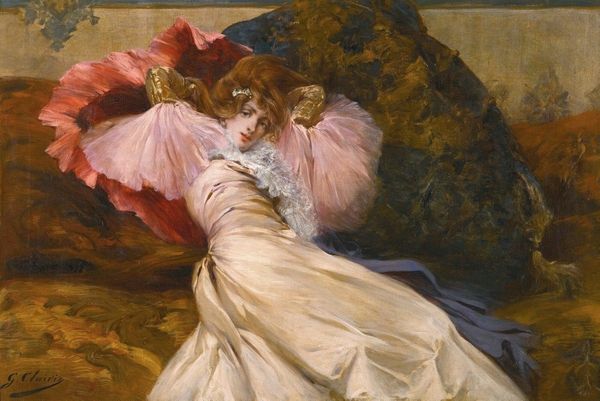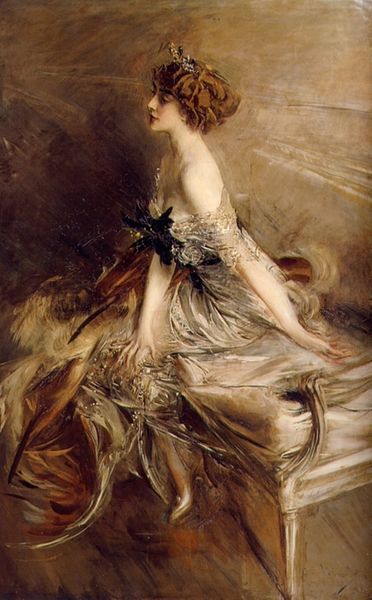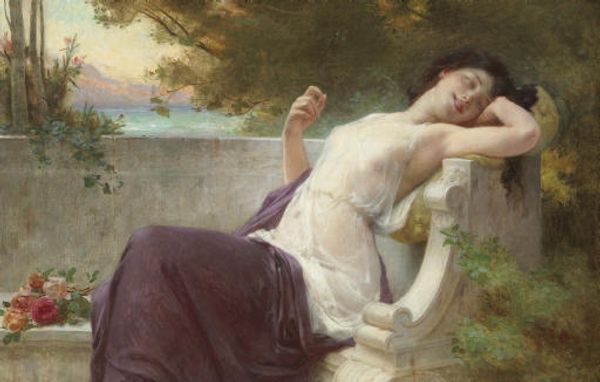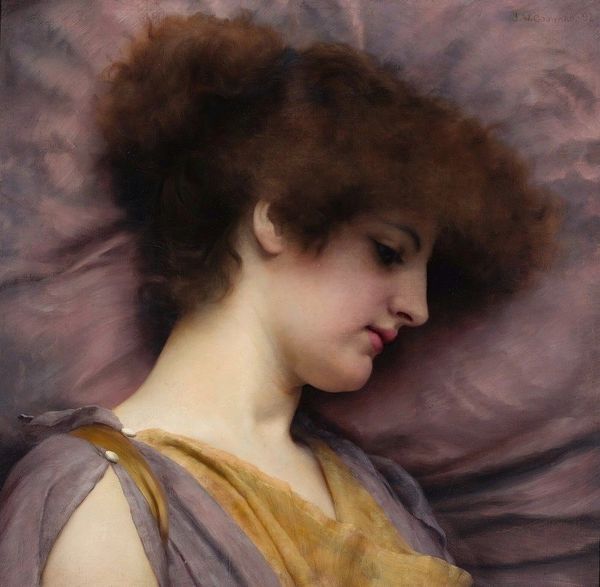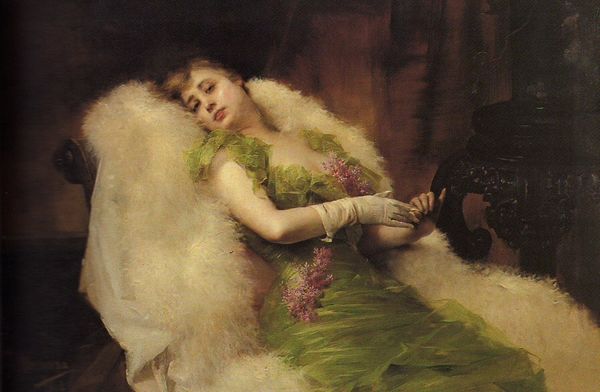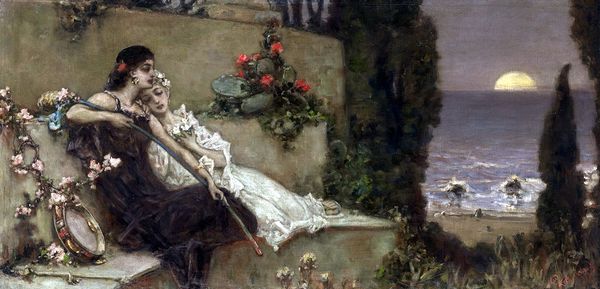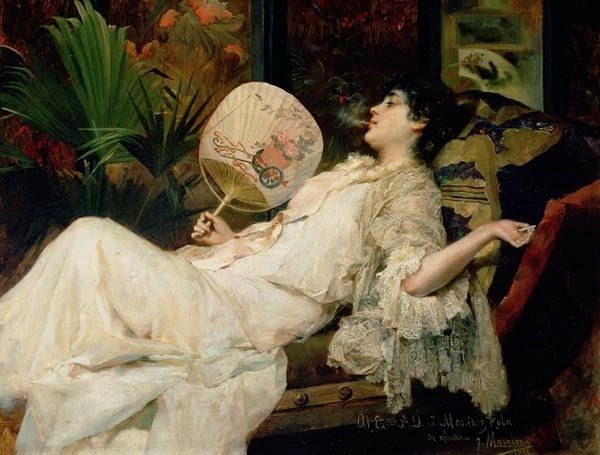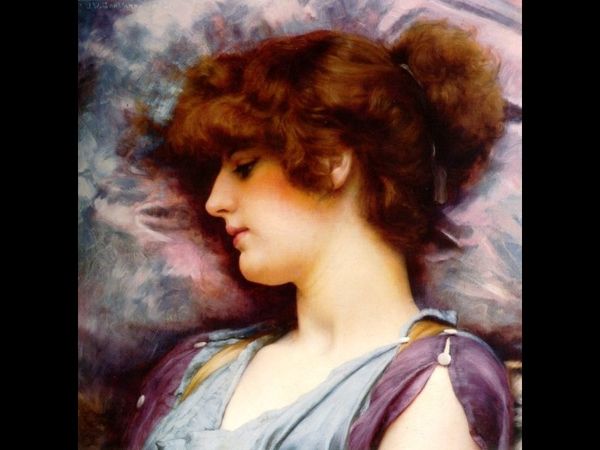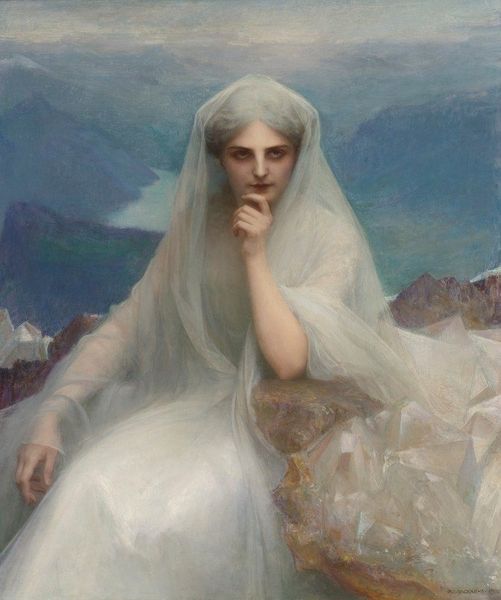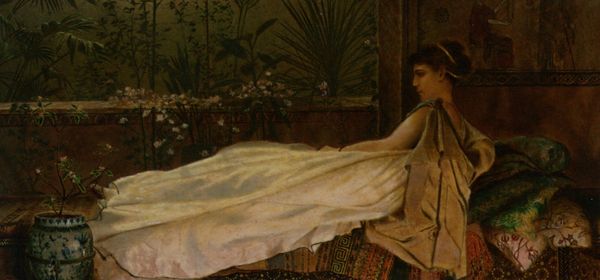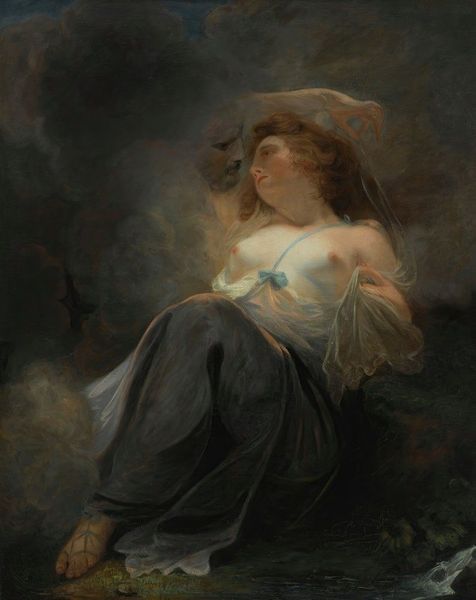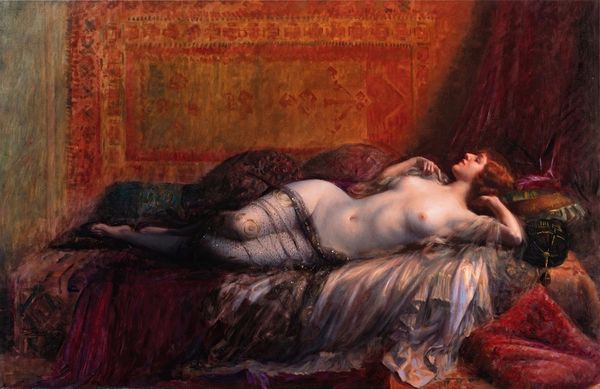
Copyright: Public domain
Curator: Francesc Masriera's "Reclining Lady", completed in 1894 using oil paints, strikes me immediately with its intimate composition. What are your first impressions? Editor: A sigh of languid release. The reclining figure seems to embody a rejection of constraints, her upturned face greeting the sun as a symbol of something new, hopeful, perhaps even a bit rebellious. Curator: Interesting. Note how the loose brushstrokes create a sense of movement, especially in the cascade of her white dress. The impasto technique used for the fabric adds a tactile quality, emphasizing its texture and volume. This creates a formal tension with the figure’s stillness, demanding that the painting’s parts perform a complex balance. Editor: The whiteness is definitely notable—white as purity, or even as surrender. The shadows surrounding her imply a refuge from the world. She's suspended, caught between those shadows and that intense shaft of sunlight, her closed eyes preventing engagement. What do you think she's holding in her gloved hand? Curator: It appears to be a wide-brimmed hat. Its form mimics the large pink fan behind her, with the angle reiterating that of the woman's chest. These shapes become visual echoes, a form of pictorial cohesion. In contrast to the soft texture of her skin, the material of the dress appears much thicker, reflecting Masriera’s skillful differentiation between surfaces. Editor: Yes, there is the juxtaposition between vulnerability and protection, sensuality and confinement, echoing the societal constraints placed upon women then. Sunlight often serves as an attribute to the Divine; thus, the sun here can be read as a form of self-acknowledgment. It seems she finds validation in the light she sees, rather than in the looks or acceptance of another. Curator: It’s compelling how the formal qualities—the use of light, texture, and compositional elements—are inseparable from the thematic content of liberation. Masriera employs these devices not only to depict, but also to embody, a specific sentiment. Editor: An assertion of freedom. The iconography underscores the individual's internal struggle for autonomy—one we can all understand, even today. Curator: Examining Masriera’s formal decisions allows for a deeper reading into how Romanticism might have portrayed genre painting in the late 19th century. Editor: And thinking about the psychological depth behind the imagery lets us consider how Masriera portrayed the figure as an archetypal representation of change.
Comments
No comments
Be the first to comment and join the conversation on the ultimate creative platform.
